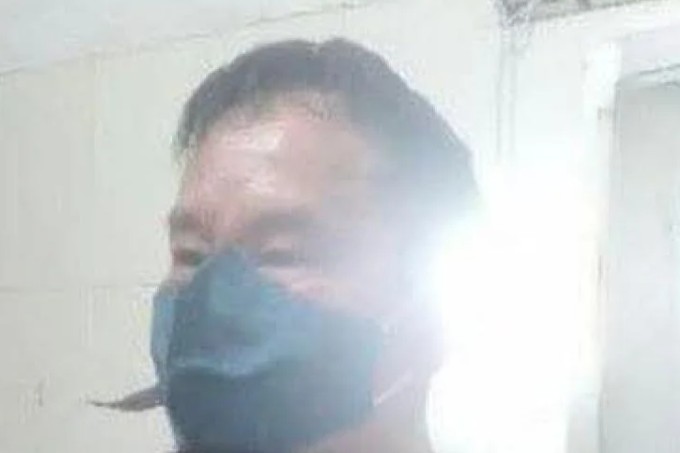The Vietnamese Butcher Video and Platform Responsibility
In the age of instant sharing and nonstop digital consumption, it takes something truly disturbing to capture global attention. Viral videos are not new millions circulate daily but certain clips stand out for their shocking, unsettling, or even horrifying content. One such case is the infamous “Vietnamese Butcher video”, which has gained notoriety across various social media platforms.

The video’s disturbing imagery, combined with its mysterious origins and cultural context, has fueled both fascination and outrage. It is not merely another piece of internet gore; it has sparked debates about morality, online responsibility, and the unsettling ways digital communities engage with shocking material. To fully understand this phenomenon, one must examine how the video emerged, why it spread so quickly, and what it reveals about internet culture today.
Contents
The Vietnamese Butcher Video
The “Vietnamese Butcher video” reportedly depicts highly graphic and violent scenes that many viewers describe as among the most disturbing they have ever witnessed. Its title suggests a connection to either a crime involving a butcher or brutal acts that appear to take place in a Vietnamese context. While the exact origins remain unclear, the clip seems to have surfaced in underground online forums before spreading to mainstream platforms like Twitter/X, TikTok, and Reddit.
The uncensored Vietnamese Butcher video series causes psychological trauma
vietnamese-butcher-video-1.mp4
vietnamese-butcher-video-2.mp4
vietnamese-butcher-video-3.mp4
Some users speculated that the video could be tied to criminal activity, while others argued that it may be related to slaughterhouse or black-market footage. Regardless of its true nature, the content is graphic enough to provoke strong emotional reactions, which explains why it became a focal point for online discussion.
The Viral Spread
The trajectory of the Vietnamese Butcher video highlights how disturbing content manages to bypass restrictions and spread like wildfire. Within hours of its appearance on niche platforms, users began reposting clips or screenshots on Twitter/X under sensational hashtags designed to attract attention.
On TikTok, reaction videos became popular, where creators filmed themselves watching or pretending to watch the clip. Even without showing the video itself, the shock value was enough to drive millions of views. Reddit communities dedicated to gore and “NSFL” (Not Safe for Life) content further amplified its reach, while encrypted messaging apps like Telegram allowed uncensored sharing.
This viral pattern demonstrates how algorithms often reward engagement regardless of content type. By sparking curiosity and fear, the video created a cycle where even those warning others about its horrors inadvertently helped spread it further.
Public Reactions and Debates
As with many viral shock videos, public responses to the Vietnamese Butcher video have been polarizing.
Outrage and Condemnation: Many viewers expressed disgust and called for platforms to remove the video immediately, arguing that such extreme violence should have no place in public online spaces.
Curiosity and Voyeurism: Others admitted that, despite the warnings, they felt compelled to watch out of morbid curiosity. This highlights a recurring paradox of internet culture: people are simultaneously repelled by and drawn to shocking imagery.
Trauma and Distress: Numerous users reported feeling disturbed, with some even experiencing nightmares or anxiety after viewing the clip. This raises concerns about psychological harm, especially among younger audiences.
Interestingly, cultural differences also influenced reactions. While Western audiences tended to emphasize trauma and the need for censorship, some Asian viewers contextualized it within broader issues of violence, crime, or even the realities of meat consumption. This reveals how cultural frameworks shape the interpretation of viral material.
Media Coverage
The mainstream media was quick to pick up on the Vietnamese Butcher video, often focusing on the controversy it generated online. Tabloid outlets sensationalized the story, emphasizing the grotesque details to attract clicks. Meanwhile, more serious publications questioned why social platforms allowed such material to go viral in the first place.
Journalists drew comparisons with infamous shock clips like the “Funky Town cartel video” from Mexico, which similarly horrified global audiences while fueling endless online discussions. These comparisons placed the Vietnamese Butcher video within a disturbing lineage of viral gore content that periodically reemerges to test the limits of what society is willing to watch.
However, by reporting extensively on the video, media outlets risked amplifying its reach even further. Critics argued that coverage should focus less on sensationalism and more on discussions about digital safety and ethical responsibility.
Online Safety and Platform Responsibility
The viral spread of the Vietnamese Butcher video underscores ongoing challenges in regulating graphic content online. Platforms like TikTok, Twitter/X, and YouTube have guidelines prohibiting extreme gore, yet such material frequently slips through due to algorithmic loopholes and the speed of user uploads.
Algorithms often prioritize engagement, which can unintentionally push shocking material into wider circulation. Reaction videos, warnings, and commentary clips may not show the original content but still promote its existence, keeping it alive in the public conversation.
This raises serious questions about platform responsibility. Should companies invest more in AI detection of graphic content? Should reaction videos to such material also be restricted? And how can younger users often the most vulnerable be protected from exposure to traumatizing media?
The incident reignited calls for stricter monitoring and highlighted the psychological risks associated with consuming violent content online.
Ethical and Cultural Implications
Beyond platform policies, the Vietnamese Butcher video sparks deeper ethical and cultural debates. On one hand, documenting violence and harsh realities has journalistic or social value; it can expose crimes or injustices. On the other hand, spreading uncensored gore often serves no purpose beyond shock and exploitation.
The popularity of such videos points to a darker aspect of human psychology: a fascination with taboo-breaking, violence, and death. Scholars argue that this reflects both desensitization caused by media saturation and a primal curiosity about mortality.
Culturally, the video also raises questions about representation. By being labeled as “Vietnamese,” it inadvertently ties national identity to shocking imagery, regardless of whether the footage truly originated there. This illustrates how viral content can reinforce stereotypes or stigmas against entire communities.
The Legacy of the Vietnamese Butcher Video
As the frenzy surrounding the Vietnamese Butcher video begins to fade, its legacy remains as part of internet folklore. Like previous infamous gore clips, it will continue to circulate in underground forums and be referenced in online debates about the boundaries of free expression.
Its viral journey underscores three key lessons:
The internet rewards engagement, even when content is harmful.
Audiences remain both horrified and intrigued by violent imagery.
Platform moderation struggles to keep up with the evolving tactics of users.
Ultimately, the video serves as a grim reminder of the internet’s capacity to expose the darkest corners of human behavior.
The Vietnamese Butcher video stands as one of the most unsettling viral phenomena of recent years. From its mysterious origins to its explosive spread across social media, it has captivated, horrified, and disturbed millions of people worldwide.
Yet beyond the shock value lies a deeper story: about how digital platforms handle extreme content, how audiences respond to violence, and what this says about our collective psychology. The debates it sparked about ethics, responsibility, and cultural interpretation are just as important as the video itself.
In the end, the Vietnamese Butcher video is more than just another viral clip. It is a stark illustration of the dangers of unfiltered digital sharing, the fragility of online safety, and the unsettling reality that in the digital age, humanity’s darkest impulses can achieve global reach in an instant.
Hot News -Louisa Jespersen and Maren Ueland Video and Crime
Ikbal Uzuner Video and The Father’s Testimony
Major Galore Viral Video on Twitter and Public Reaction
Minneapolis Shooting and Robin Westman Youtube Video
Victoria Tesla Video on Twitter and Man in a Tesla
Nermin Sulejmanović Video and Tragic Instagram Livestream
Syko Stu and Rampage Jackson Son Raja Jackson Fight Video Incident

